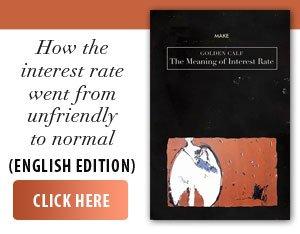Global gold demand has remained solid over the past decade, fueled by the consolidation of central bank reserves, investment and jewelry demand, shows an analysis by visualcapitalist.com, which presents the most important gold-producing countries from 2010 to 2024, highlighting their evolution in the field.
While some countries have significantly increased their production of the profile, others have recorded notable decreases, according to data from the World Gold Council (WGC).
• China invests in mining infrastructure for the long term
China has been the main global producer of gold for more than a decade, according to the cited source. It notes that in 2024, the Asian country produced 380 tonnes of gold, up just 8% from 351 tonnes in 2010. Despite the modest growth, its dominance reflects long-term investment in domestic mining and refining infrastructure. China's state-backed mining industry also helps insulate it from global volatility.
• Russia and Canada gain ground
Second-ranked Russia has increased its gold production by 63% since 2010, reaching 330 tonnes in 2024. This growth is driven by heavy investment in mining projects and a strategic focus on building up national reserves. Australia follows, with 284 tonnes in 2024, up 11% from the 257 tonnes mined in 2010. In contrast, Canada, ranked fourth, saw the largest increase among the top five producing countries, at 98% - from just 102 tonnes in 2010 to 202 tonnes in 2024.
• US gold production in decline
The US is the only producer among the top five to see a decline in the amount of gold mined. In 2024, the US produced 158 tonnes, down from 231 tonnes in 2010 - a 32% drop. Environmental regulations, lower ore yields and the closure of major mines all contributed to the decline, pushing the US to fifth place globally.
• WGC: Central banks prefer gold to dollar for reserves
Central banks around the world expect the share of gold holdings in their reserves to increase over the next five years, while the share of the dollar in their reserves is expected to decrease, according to a study published this summer by the World Gold Council (WGC), cited by Reuters.
The WGC study included 73 central banks, and 76% of them expect their gold holdings to increase over the next five years, compared to 69% last year. Almost three-quarters of respondents expect central banks' dollar-denominated reserves to be lower over the next five years, compared to 62% last year, notes Agerpres.
Demand for gold from central banks has increased significantly over the past three years, despite the record price of the yellow metal.
"Gold's performance during times of crisis, portfolio diversification and hedging of inflation risks are the reasons for the increase in gold reserves in the future,” the WGC notes.
Central banks have accumulated more than 1,000 tonnes of gold in each of the last three years, which is a significant increase from the average of 400-500 tonnes in the previous decade. "This significant acceleration in the pace of gold accumulation comes against a backdrop of economic and geopolitical uncertainties,” the WGC states.
According to the WCG, 95% of respondents believe that central bank gold reserves will increase in the next 12 months, compared to 81% last year, while the Bank of England (BoE) remains the preferred place for central bank gold reserves to be stored.
Potential trade conflicts and tariffs were cited by 59% of central banks as relevant to the management of their reserves. "A larger share, 69%, is recorded among central banks in emerging markets, while in the case of advanced economies the share is 40%," the World Gold Council reported.
Central banks are the third largest category of gold buyers, after the jewelry and investment sectors, being responsible for about 23% of global consumption of the yellow metal. Typically, central banks' gold purchases are influenced by price developments, buying when prices fall and reducing purchases when prices rise.
The spot price of gold was about $3,825 an ounce yesterday, more than 1.7% higher than the previous day, and the futures (with a term in December), $3,858.30 an ounce on Comex New York, up 1.3% at 07:56 local time.
























































